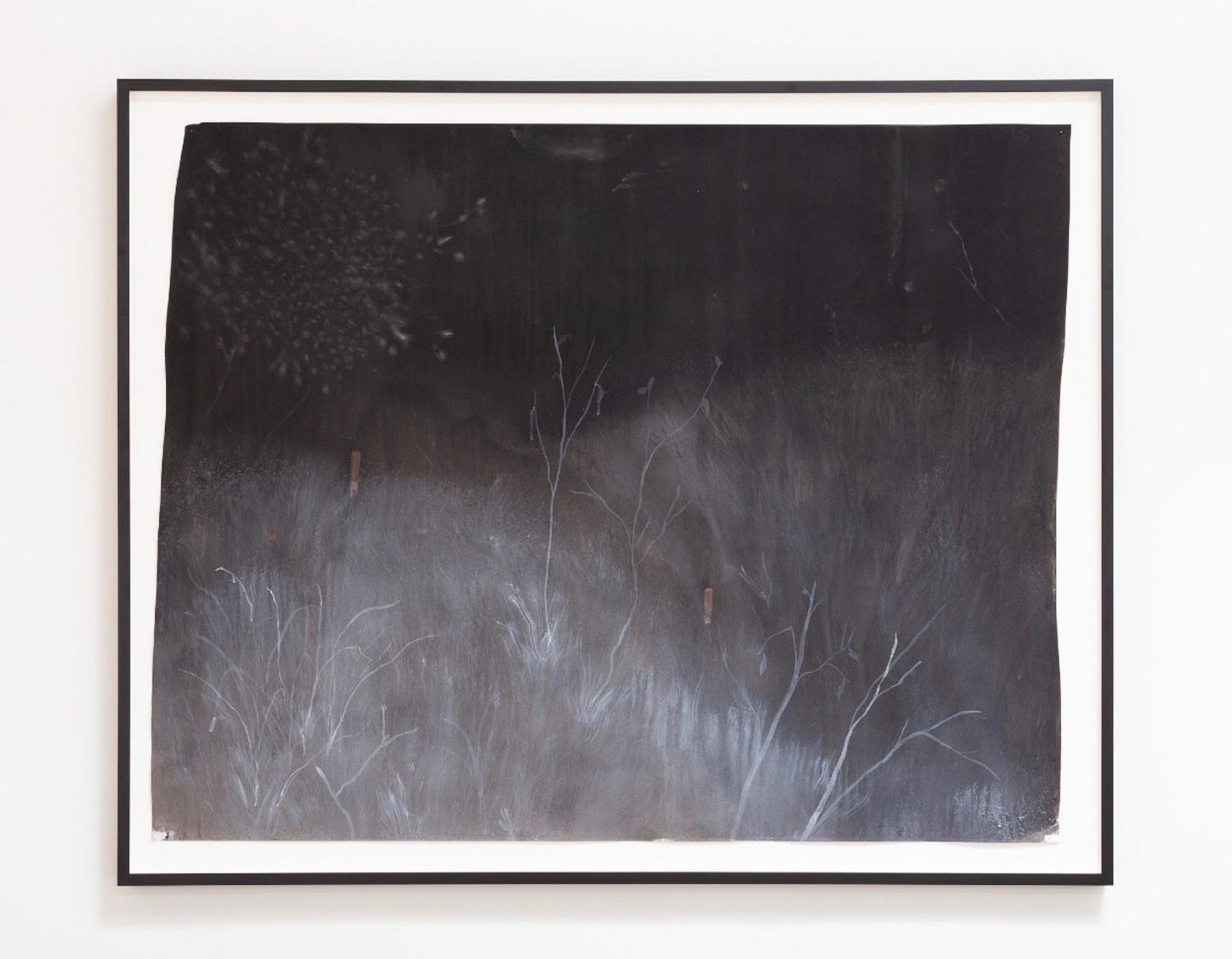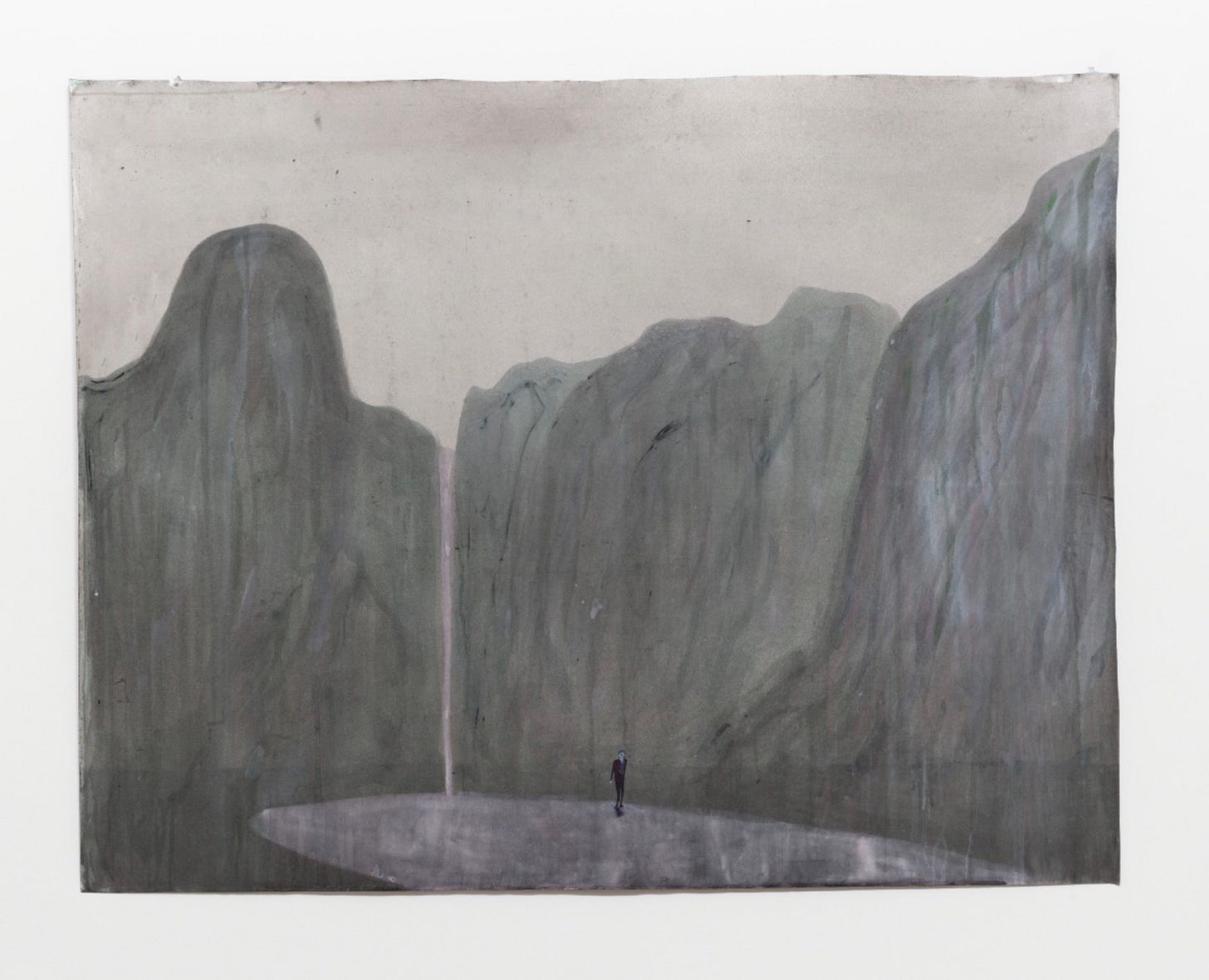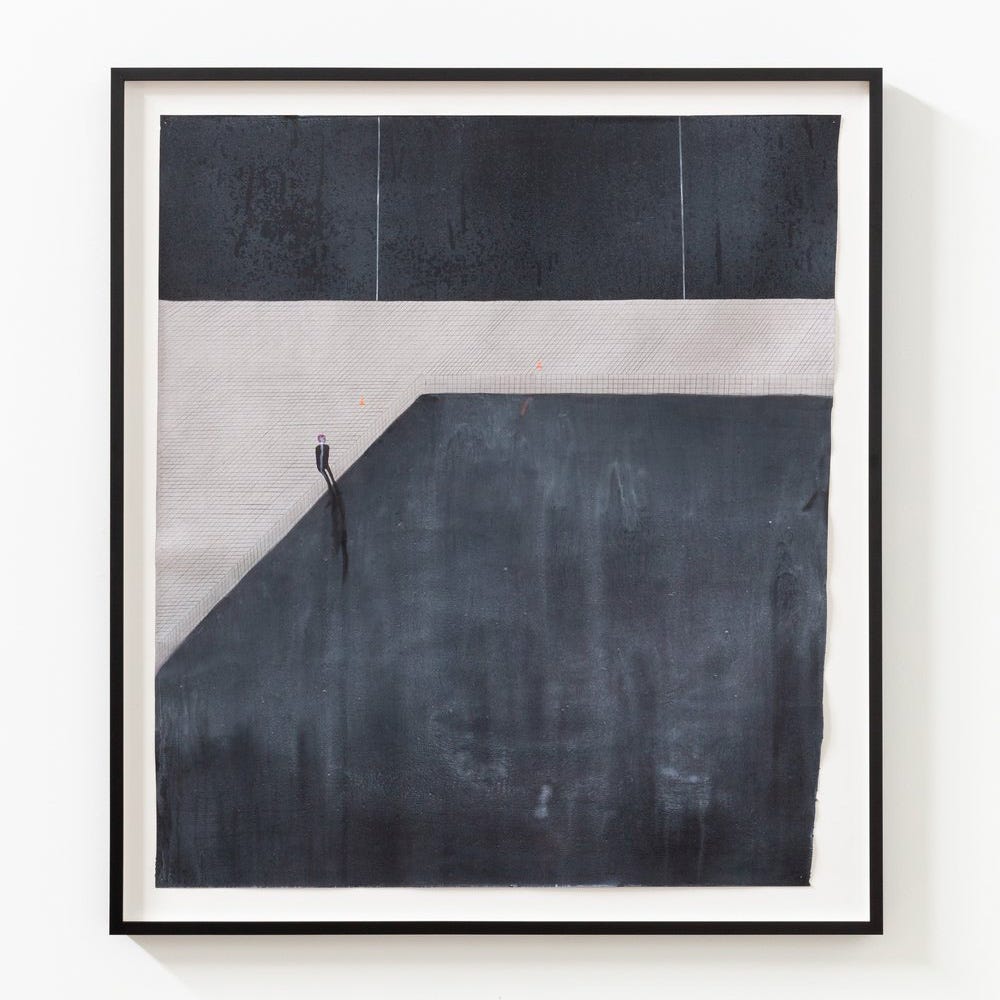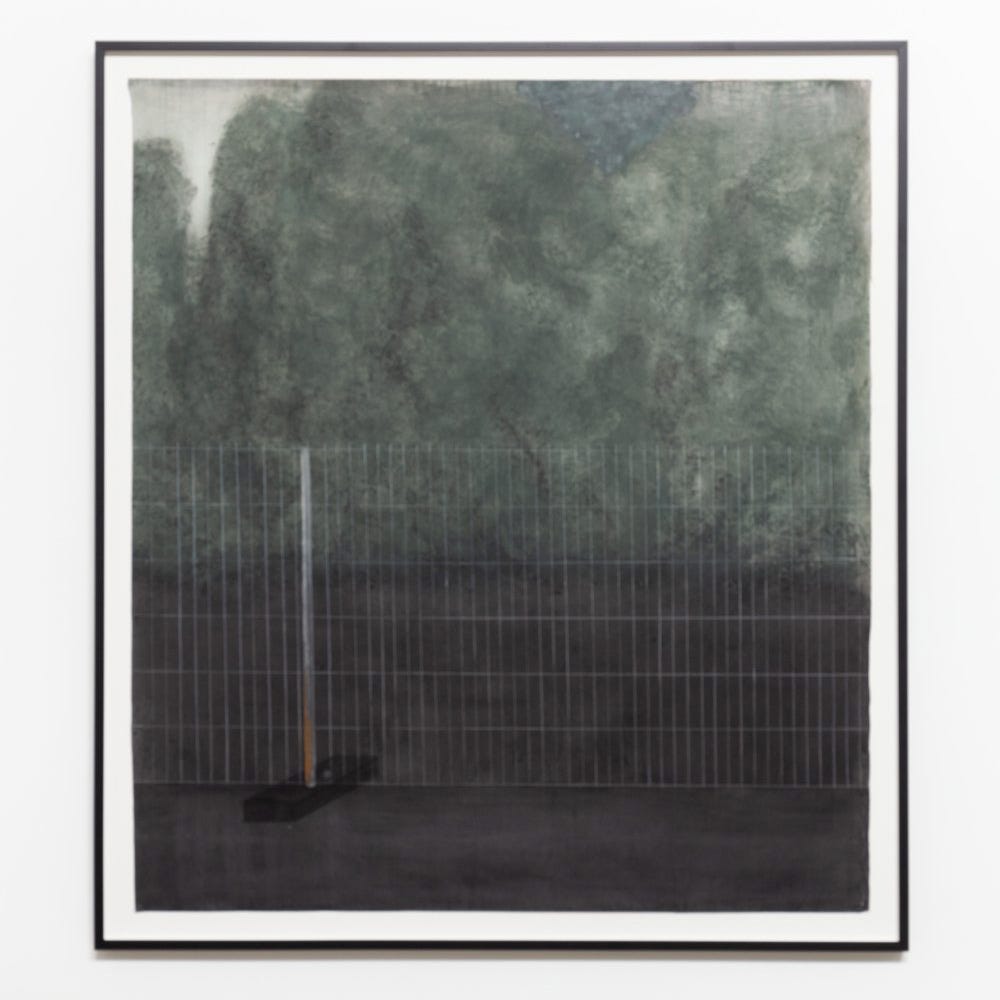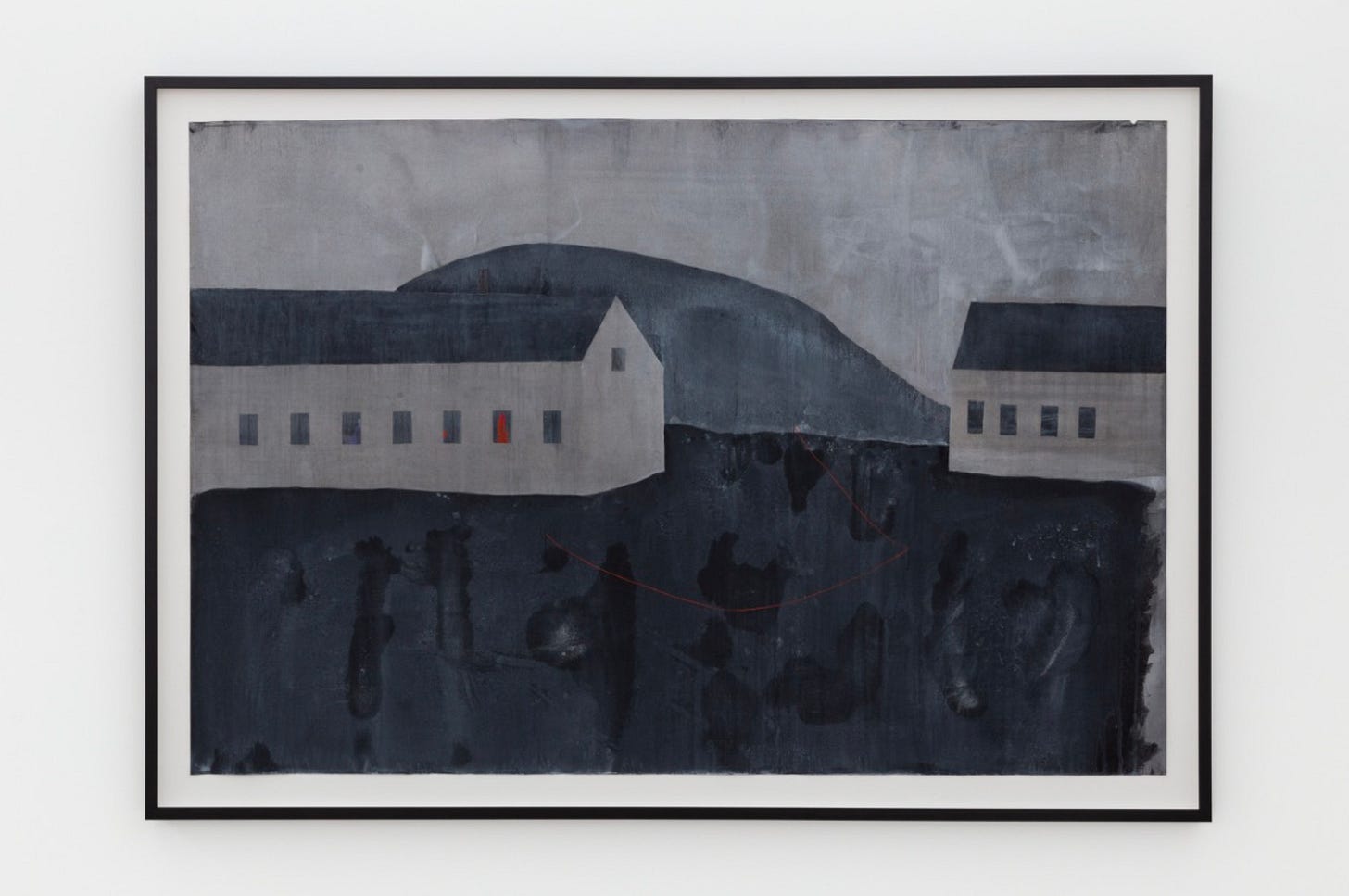let your loneliness wander
Maria Sulymenko | Trespassing | alison milne co.
**all images courtesy of: artist, Maria Sulymenko; gallery, alison milne co.**
Maria Sulymenko
Trespassing
alison milne co.
April 25 - June 15, 2024
I recently returned from a long trip to Argentina. Like most Latin American countries, the notion of loneliness epidemic, which need not be explained in Canada, felt frivolous and uncomplicated. Rarely did I settle down somewhere without having my stranger shield (an English book two inches from my nose) blatantly ignored by a friendly Porteño. Conversations cruised past small talk into politics, love, literature, and it was perfectly normal for the neighbouring table to eavesdrop and contribute in the vein of an open-forum town hall. My Canadian shyness was chipped away at for 6 months and by the end of it, I wondered if (and hoped) its damage would be permanent. It wasn’t. I write this from behind the closed doors of my Toronto townhome, where I have settled back into a Canadian tradition that feels lonely as ever.
I’m concerned about the consequences of persistent loneliness and loneliness en masse. That said, I am weary to put the words loneliness and epidemic side-by-side, in full seriousness and without italics. Metaphors should unlock a thing or cast it in a new light; this one offers little else than a value judgement. I am lonely, at times I suffer from it. But the temptation to intertwine loneliness and depression as a two-headed beast, to fend off with equal aggression, neglects the space loneliness brings for mystery, melancholy, healing—all of which I found in Maria Sulymenko’s portraits of what very much felt like loneliness.
Note that I am intentionally NOT using the word solitude, which is elective and has all sorts of positive associations.
Sulymenko, Maria. Untitled (Balance). 2024, watercolour, gouache on paper, alison milne co.
We are trained on a set of images: an anxiety-riddled person, at home, ducked out of social commitments, doomscrolling, fortifying a superficial wall between him and his neighbour. Whilst enjoying a night at home, there is always a risk of these images arriving, casting a shadow on the moment. I should put the phone down and go see a friend; I should reach out to the other lonely stranger across the way. So many of our stories about loneliness culminate in a triumph over it. I am left wondering how much of the loneliness epidemic is characterized by its existence, rather than our fumbling urgency to be free of it.
Sulymenko, Maria. Untitled (Between). 2024, watercolour, gouache on paper, alison milne co.
Perhaps we learn from a new set of images. The first thing I noticed, or perhaps felt, upon viewing Sulymenko’s pieces, was an absolute lack of digital distraction, nagging anxiety, or presence of the “other”. There was not a single electric element which forms the background hum to contemporary life. No artificial light, no revving of an engine, no distant churn of something we can’t characterize anymore but have come to accept. From the depths of mysterious, negative spaces—a field of charcoal or beige in watercolour and gouache, a sort of purgatory or abyss which features in almost every piece—I found myself waiting for a flare of fluorescent light, a buzz announcing my extraction from that lonely place. The moments portrayed are delicate, carefully pruned, and venerated by the artist, who recognizes that a small intervention could collapse them entirely.
Sulymenko, Maria. Untitled (Deep). 2024, watercolour, gouache on paper, alison milne co.
We are badgered by advice calling for mindfulness, to stay ashore rather than swim out into the reedy lakes of mind. If not harmful, the activity might be seen as indulgent. You trespassed into the dark place for a while, fine, but it’s time to come back to reality. Sulymenko’s works, however, gently encourage this trespass. It does not feel romanticized, for the settings are full of pitfalls: the abyss in Untitled (Deep) into which a figure appears to be losing themself; the tall grasses and deep forests hinting at some unpleasantness lurking; the jagged, unfinished edges of paper illustrating how little we understand of this unrefined space, where it ends and begins. The warped sense of scale in the compositions suggests that at any moment, the environment could swallow you whole. But perhaps this landmine-riddled backwater is one of few places we accept ourselves; there is an undeniable sense of bliss, if only we ignore the warnings and traipse on.
Sulymenko, Maria. Untitled (Beyond). 2024, watercolour, gouache on paper, alison milne co.
The figurative elements in Sulymenko’s works amplify a sense of emptiness, rooting the scenes in a distorted reality. Stripped-down buildings, fences and forests, fading human-like figures, abandoned pool halls. However carefully selected these were to accentuate sparseness, they feel entirely replaceable—trade the building for a grain silo, or the figure for a deck of cards—for these scenes are ultimately explorations of the mind. They are paths we have walked and will continue to walk, no matter how many distractions we put in front of our faces or meditation regiments we adhere to. We are lonelier than perhaps any other time and uniquely uncomfortable with our loneliness. We could continue to resist, or bravely trespass through those dark places, for they can be as mysterious and enlightening as a stroll through an abandoned building or a bristling, moonlit plain.
Sulymenko, Maria. Untitled (Trespassing). 2024, watercolour, gouache on paper, alison milne co.
Back to my Toronto townhome. I carry out a routine I know well, one which involves far less interaction than my days in Argentina. 72 hours of working and reading and wandering, largely in silence, before I realize—maybe this is unhealthy. I run into a friend while out for a stroll. A bit jittery, but I open my mouth and words flow. We end up sitting down for a coffee. I walk away from the interaction feeling happier, more human, like the burst of serotonin from a workout. But like any workout, I’m thrilled that it’s over. To be alone again. This might not be as charming a life as described in paragraph one, but I find myself at ease. We wish to be rid of our meekest, most isolated selves, but art exists to reconfigure us. There is an opportunity to adore a life which, at one point or another, is guaranteed to be lonely.



